In my first post on the Mississippi River (available here) we discovered the course and flow of the river and the Geologic history. Today we will add humans to the equation. Some of this history will necessarily spill out of the Mississippi River Valley, but hopefully will remain relevant to the subject.
First People
Anthropologists tell us that the first humans came to the Mississippi valley about 12,000 years ago. The current tribes and some anecdotal evidence argue for a much earlier time. Prior to the last ice age as opposed to after.
The Mississippi River valley is horrible at preserving evidence of occupation. It’s wet, and relatively firm so much of the archaeological evidence just doesn’t exist. There is anecdotal evidence of human habitation in California and Florida dating to around 40,000 years ago. The evidence is mostly cut marks on fossilized bones that some explain as naturally occuring. If there were people in North America in that time frame you can be very nearly assured that they would have settled in the lush Mississippi valley where game and plants were abundant.
We do have evidence of habitation dating from 12,000 years ago. Not much is known about these early inhabitants except they hunted and gathered plants and died here. Real good evidence of occupation starts at around 8,000 years ago. By that time people had settled the entire valley (and many of the tributaries, particularly to the east).
Those people, though little known today, were highly organized and social. What the shape and scope of the organization isn’t known, but it is obvious they had a trading network that was in use up and down the river It’s also obvious that living was relatively easy because they had time to decorate daily use items and have objects that were beautiful rather than useful
Somewhere around 4000 years ago the Adena culture began to emerge in the Upper Mississippi Region. These people were accomplished potters and worked with copper and semi=precious stones to make objects of beauty. They built mounds that were used by the tribes for burial, ceremonial and government functions. They probably (though not certainly) began the agricultural tradition that the Mississippi Valley would become famous for.
![]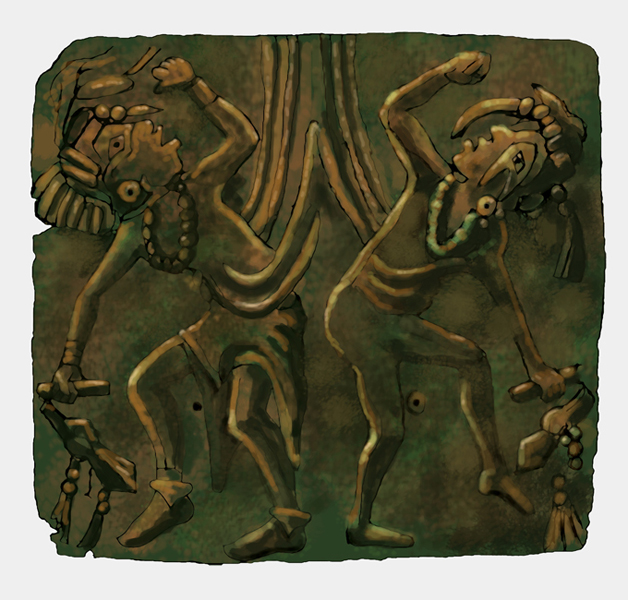
Copper Plate Sculpture found at Union County, Illinois
Source
These may be the people that first grew what we now call corn. Then it was a smallish plant with the seed ears about the size of a thumb. Through careful crop management they increased the size of the ears and the amount of edible seeds available per plant. There are only three sites on earth where primitive people domesticated and hybridized plants. The Mississippi Valley is one of those three.
These upper valley people became familiar with and affiliated with the Great Lakes people and the tribes from the northeast US and southeast Canada areas. While the people that claimed the lower river became a truly great civilization in history.
The Mississippian Culture
The Lower Mississippi people in history are generally known as the Mississippian Culture. They flourished for around 3000 years across a broad stretch of the southeastern quarter of what became the United States. Primarily an agrarian society, they pushed the level of civilization in multiple ways.
They domesticated several crops that we use today and used a sophisticated breeding program to improve them dramatically. Notably corn, squash and beans.
They worked with metals, especially copper that they used artistically and for tool construction.
They built huge earthworks. Some were for governmental purposes, some for religious purposes and some as burial sites. Think American Pyramids, only they built a lot more across a much larger area.
They had an extensive trade network that spread across roughly two thirds of what would become the US.
They had the largest city on earth. For several hundred years Cahokia had a larger population than London.
They added ground sea shells to their pottery which improved strength and plasticity and made it possible to make objects larger and more varied in shape.
They spread a more or less universal belief system across an enormous area. They played ritualized games that were not only for the onlookers but also status of the leaders.
The system of governance changed dramatically over the course of a few hundred years. The inhabitants moved from a clan based government to increasingly fewer and fewer individuals that ruled the masses. Social inequality was rampant as the few lived well off the effort of the many.
What happened? Where did they go? How did the European contingent with such inferior numbers capture and subdue such a mighty civilization?
In the hundred years prior to European contact the earth went through a ‘mini ice age’. Volcanic ash obscured the sun to a relatively significant amount which caused crop production to go way down. As crop production dropped the civilizations could no longer support the huge population centers that had grown up. Social and political unrest led to much warfare and boundaries being changed.
The ‘strong man’ rule that had become the norm in the society broke down completely, comparable to the end of the monarchies in Europe. People migrated and changed alliances which left no consolidated largest player in the game.
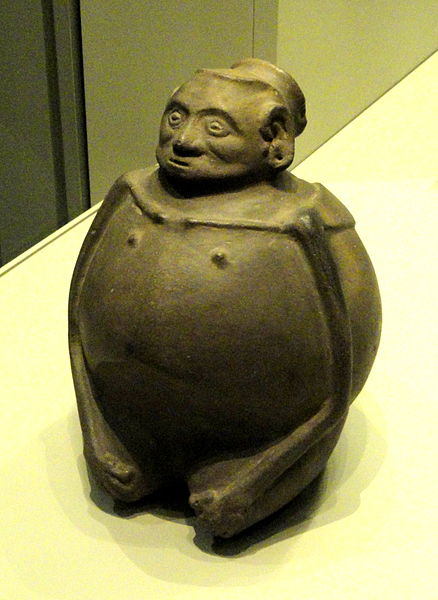
Source
At roughly the same time that the climate stabilized, the first Europeans arrived. It is entirely probable that 6 million people died in the Mississippi Valley as a direct result of measles and smallpox. It would be like Europe being invaded during the plague years with the invaders immune to the plague. A very unlikely series of events that effectively ended the great civilizations of the Mississippian Culture.
The first Europeans that made contact with the Mississippian Culture were the Spanish. Henry DeSoto led an expedition into the area in 1539. Though DeSoto’s command was eventually wiped out the damage was done. The natives traded health and well being for horses.
In the next part of this series we will pick up the thread at first contact to develop more of the history of the Mississippi River Valley.
Unsourced Photos are used courtesy of the author.
While the words and ideas in this post are strictly those of the author this source was referred to by me to insure numerical and historical accuracy.
Wikepedia: Mississippi River
Authored by: @bigtom13
Adsactly is a society for freethinking people. Interested?
Click on the coin to join our Discord Chat

Vote @adsactly-witness for Steem witness!
Witness proposal is here:
Go To Steem Witness Page
In the bottom of the page type: adsactly-witness and press vote.

Use small letters and no "@" sign. Or, click here to vote directly!
Thank you!
Click on the coin to join our Discord Chat

Witness proposal is here:
Go To Steem Witness Page
In the bottom of the page type: adsactly-witness and press vote.

Use small letters and no "@" sign. Or, click here to vote directly!
Thank you!
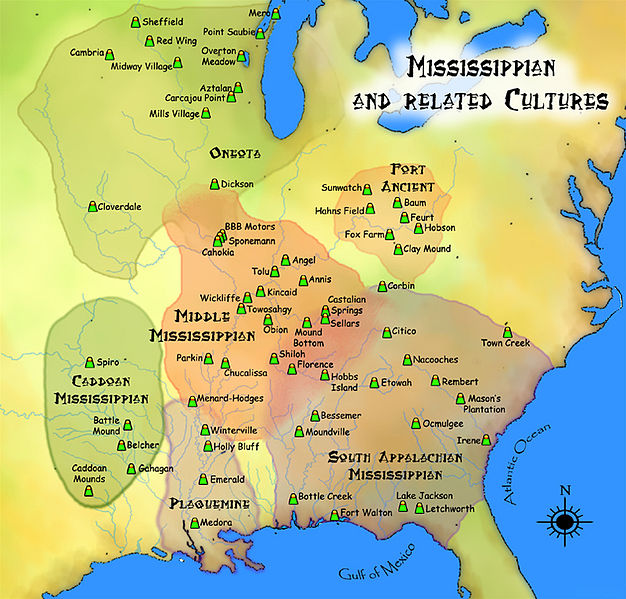
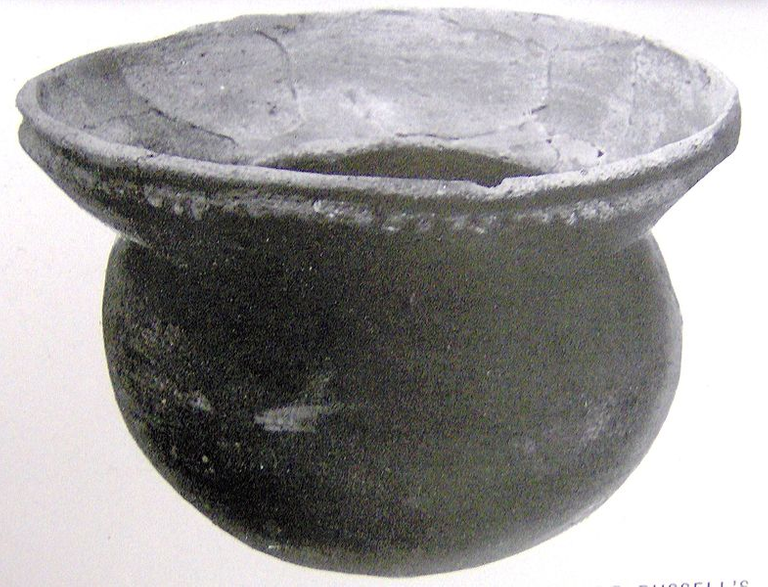
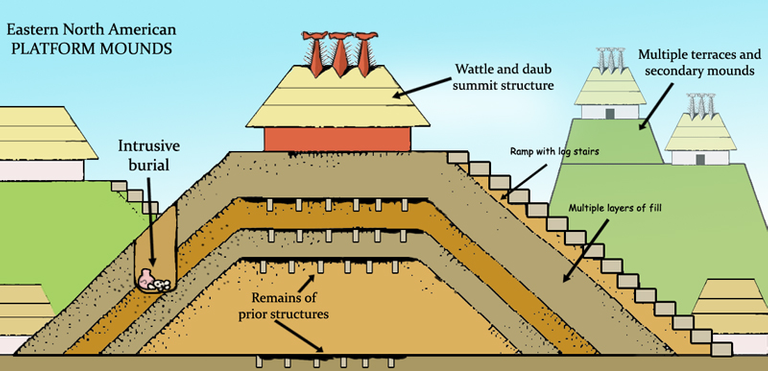
Some claim this past has been purposely hidden or ignored, to some, for obvious reasons. The copper plate "individuals" almost look Mayan or Aztec. Also, if you look on that first map, near the lower left of Lake Michigan, is a location named "Aztalan," which is very similar to the Aztec legend that they came from the "North," from a place they called "Aztlan."
Another interesting similarity is that Lake Michigan is a native name for place with great water. Probably not as many fish today in Lake Michigan, which oddly, sounds like the Mexican State of Michoacan, which means place of the fishermen.
Another tidbit fact that is also largely ignored, is that "Mexicans" are generally 30% or more part Native American, thus the hiding or ignoring of some of these historical facts could be based on fear of the nearly destroyed Native population. Maybe the natives might one day ask for reparations should they become wise to their ancient past and ancestral lands.
Oh. They have asked for reparations, of that there is no doubt. The Sioux tribes particularly.
I don't know that I subscribe to the theory that the Aztec were the root of all things for the North American people. The words you describe also have meanings in other languages. Many places were given names based on one word heard one time from one tribe, and not a consensus at all. The Snake river is so named because the Frenchman that asked the name presumed the answer to be Snake when actually it was 'big fish'.
Thanks for a thoughtful and interesting comment.
That’s a long time based on US history I’m aware of which reaches only few hundred years ago. Whether anthropologists were correct or not, it’s very interesting to know the beginnings of civilization in US Mississippi’s river and valley. Even 4K years ago people growing food such as corn 🌽 feels like it’s not that long time, since we can clearly relate to these people, afterall we are growing corn today the exact same way in certain countries. If you think about it, just a few hundred years ago people lived very similar way, without cars, or today’s technology.
😱! That’s even hard to imagine.
As always very informative and great article about Mississippi river, valley and culture history @bigtom!
The losses were just staggering in the Mississippi Valley region, probably because the people lived so close together in a highly organized society. It just is dumbfounding to me that there was a city in the Mississippi Basin that was larger than London.
Corn, Squash and Beans were the big three crops for these people. It is still the same in many places.
Latest historians discovered Mississippi river gor the sake of human world and river flow and neccessary of their spill out from ancient society
Still scars of human habitats present in florida in few parts of South America
Their tributes are treat them as a holy river for Americans
Posted using Partiko Android
It is the longest river flow in the regions of california n florida
Posted using Partiko Android
It isn't the longest in the US, the Missouri is. But it is clearly the most important, by any measure.
It is the oldest river valley from ancient human beings in parts of americana
Posted using Partiko Android
It is sort of a holy river for us, for all of us. It is entwined with our history for the entire length of it.
GREAT POSTING, opens the horizon of our knowledge of river and its connection with human life in ancient times.
big rivers such misissipi play an important role in the history of the development of human civilization. early humans chose to live on the banks of the river. The pattern of the occupancy of ancient humans, whether they were temporary or settled, would certainly make the river the right consideration as their area. there are several factors choosing the area around the river as a living theme.
The residential pattern of early humans occupied many caves around the river. They use the cave as a temporary place to stay or even make it a grave. in the caves that are long lived will leave the culture of abris sous roche, the lives of humans who live in caves. because they have lived there for a long time, usually they will leave food scraps in the form of hells, bones and even the tools they use in kjokken modinger , which is interpreted as kitchen waste.
Thank you Steemit Thank you @bigtom13 Thank you @adsactly
Warm regard from Indonesia
The Mississippi Valley really had all the elements needed for a vital civilization. And it certainly was that for several thousand years.
I agree. Civilization will grow better when it come into perfect place as seed will grow well at the fertile soil.
Human build their cuvilization in their community and support by the elements of nature too.
Humans then for sure it's an subject of deep research and deep exploration because we are searching for the pieces which we never witnessed. But the beauty of the research means, we can deep dive and we can create an outline of history through available evidence.@bigtom13 and @adsactly, This continuation is really appreciable and literally speaking whenever we talk about the first
As you wrote, first humans came to the Mississippi valley about 12,000 years ago,that showcase what is the nature of the history and whenever we think about the time span of human beings and the generations of human beings covered gives the great essence for sure.
And i want say one thing that, in my opinion Ancient Beings were really technologically developed and today we see Satellite Images in digital form and there are historical facts where Ancient Cave Man drawn the art of pictures which decoded as same which we see today as satellite images, so it's telling that, we are thinking only we are advanced but it's not true in my opinion because, ancient beings were advanced and in my opinion one example is Pyramid Of Egypt which is super advanced in the aspect of mathematics and it's really matched with the star calculations too, that's something amazing stuff.
Keep up and keep explore the Historical subjects and hope that you will going to share more amazing writeups in future.
Wishing you an great day and stay blessed. 🙂
Well organized article, great job and interesting information. Thanks for sharing mate.
Thanks. I'm glad you liked it.
The Mississippi Stream is one of the world's significant waterway frameworks in estimate, living space decent variety and natural efficiency. It is likewise one of the world's most critical business conduits and one of North America's incredible relocation courses for the two winged animals and fishes.
Local Americans lived along its banks and utilized the waterway for sustenance and transportation. Early European pilgrims utilized the Mississippi to investigate the inside and the northern compasses of what was to end up the Unified States. Hide brokers carried out their specialty on the stream and fighters of a few countries garrisoned troops at vital focuses, at different occasions, along the waterway when the region was still on the outskirts.
White pilgrims from Europe and the Unified States (and frequently their slaves) touched base on steamboats confiscating the Local Americans of their territories and changing over the scene into ranches and urban areas.
Today, the Mississippi Stream controls a noteworthy section of the economy in the upper Midwest. Canal boats and their tows move roughly 175 million tons of cargo every year on the upper Mississippi through an arrangement of 29 bolts and dams. It is additionally a noteworthy recreational asset for boaters, canoeists, seekers, fishers, and birdwatchers and offers numerous open air openings.
There is no doubt the Mississippi is a big deal in America and has been for centuries. The next article will delve into contact between the Europeans and the Natives and that time period will be explored in some detail. It's not always a pretty picture.
Thanks for the great comment. I hope you will come back for more.
when i first read about them i was shocked by what i saw, their Mississippian Culture, medicine, educational values, their geographical areas and their rivers for occupational purposes.
these people are blessed by nature.
thanks to the historian.
They were quite a civilization that really disappeared very fast. I'd guess they were blessed and cursed.
Very cool. I've always been interested in the theory that the Aztecs came to northern Georgia after the Spanish invaded.
There was such a huge upheaval at about that time. Where did the Mississippian Culture go? Where did the Pueblo dwellers go? I've spent days contemplating those questions.
So interesting . I really enjoyed it . You did good job. Your article has some very nice fects.
Thank you!
Quite a detailed study about the early civilisation. Thanks to these we still occupy with domisticztion of few crops. Knowing History always excite to know about the artefacts, the utensils the governace etc.
PS. : @bigtom13 Seems while drafting the post few paragraphs have been repeated in starting (after the map image)..please edit to avoid reader confusion.
Posted using Partiko Android
Thank you. I'm not sure what the format problem was, but somebody fixed it before I saw it.
My education was sadly lacking in this part of history. I was angry when I started finding out about advanced civilizations prior to the Europeans. I am very happy to see some balance in the equation.
You historical article too much informative... Thanks for sharing. We are waiting more and more new informative posts.. Best of luck brother.
Thank you.
Such a great piece. The human animal is always invading and killing then appropriating, it's the drive of the species |I guess. Have you read Guns, Germs, and Steel?
Oh, yeah. Guns, Germs and Steel is a major part of my 'adult education'. It's an incredible work, one that has had a major impact on my life.
This is such a great history of early America, but I have a question that is they have any major difference between middle Mississippi, Carddaoan Mississippi, and south Appalachian Mississippi, and is there any culture spot left to watch?
They all basically fell apart. Some of the 'modern' tribes in the general area are related, some are not. It's like the Pueblo People here in the southwest. Where did they go?
I have to admit that I hate history, mainly because of bad memories from school times.
But I always get curious to know how where and what our ancestors did in the past.
I hated history in school because they always wanted the dates right :) And I have since found that the history I learned had very little to do with reality. I love that I can learn things now with out the pressure of grades.
Exactly, I couldn't say any better!!
The Mississippi River is the second longest river in North America, flowing 2,350 miles from its source at Lake Itasca through the center of the continental United States to the Gulf of Mexico.The name Mississippi comes from the Anishinaabe people who called the river 'Misi-ziibi' which means 'great river'. It is also known as the Mississippi-Missouri. Mouth: The river flows into the Gulf of Mexico via a delta shaped like a bird's foot! Location: USA
I've always been interested in the theory that the Aztecs came to northern Georgia after the Spanish invaded. perfect job
@adsactly srry for talking off the topic. I read so many places u leverage other stemians to help them out. but even after reading so many articles, I still didn't understand how it works, how it all starts. Can u brief me little and share the link where its clearly mentioned. thanx
The Chickasaw were impressive warriors who lived in towns along streams and waterways. People wore garments made of buckskin in the late spring and included bison robes in colder climate. The two people had long hair. A definitive symbol of respect for a Chickasaw warrior was a mantle, or robe, made out of swan plumes.That's a great content post @adsactly and @bigtom13
Gatherings of Chickasaw were for the most part free of each other politically, however would arrange together in the midst of war. Starting amid the American Revolution, Chickasaw arrives in the Mississippi River territory were seized in light of the fact that the Chickasaw bolstered the British. In the end, in view of the Indian Removal Act in 1830, the Chickasaw were re-settled in southeast Oklahoma ashore that had a place with their previous neighbors, the Choctaw..
Thank you very much for sharing this post..
You Plagiarism checked 0% unique also. That means you copied and pasted. You are also on the Build a Whale blacklist. Flag.
This is my contribution about this river and early people..
The names of the Mississippi clans incorporated the Biloxi, Capinans, Chakchiuma, Chickasaw, Choctaw, Choula, Dakota Sioux, Grigra, Houma, Ibitoupa, Koroa, Moctobi, Natchez, Ofo, Okelousa, Pascagoula, Pensacola, Quapaw, Taposa, Tiou, Tunica and Yazoo.
Before Europeans started to investigate the zone presently known as Mississippi, three noteworthy Native American gatherings lived there. In the north and the eastern parts of the state were the Chickasaw. The Choctaw lived in the focal piece of an area and the Natchez lived in the southwest.
Thanks for sharing
Thanks a lot @bigtom13 And thank you @asactly
You plagiarism checked 0% unique content. And you are the build a whale blacklist. That's enough reason for me. Flag.
very nice...hope u will appreciate my work as work
https://steemit.com/@warsishah
We really frown on link dropping in our comment section. It's a flag offense.